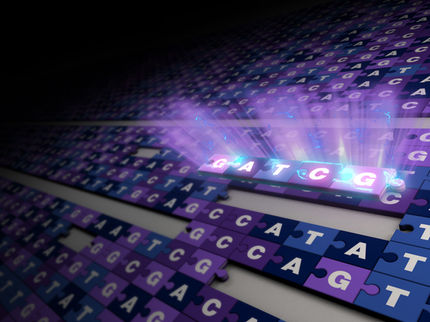Genetic 'roadmap' charts links between drugs and human disease
Scientists create public database of 'genomic signatures' for ~160 drugs and use it to reveal potential applications to cancer and other diseases
A research team led by scientists at the Broad Institute of MIT and Harvard announced the development of a new kind of genetic "roadmap" that can connect human diseases with potential drugs to treat them, as well as predict how new drugs work in human cells. Called the "Connectivity Map," the new tool and its uses are described in Science and in separate publications in Cancer Cell. The three papers show the map's ability to accurately predict the molecular actions of novel therapeutic compounds and to suggest ways that existing drugs can be newly applied to treat diseases such as cancer. Based on the results, the papers propose a public project to expand this initial human Connectivity Map - in the spirit of the human genome Project - to accelerate the search for new drugs to treat disease.
"The Connectivity Map works much like a Google search to discover connections among drugs and diseases," said senior author Todd Golub, the director of the Broad Institute's Cancer program, an investigator at the Dana-Farber Cancer Institute, an associate professor of pediatrics at Harvard Medical School, and an investigator at the Howard Hughes Medical Institute. "These connections are notoriously difficult to find in part because drugs and diseases are characterized in completely different scientific languages."
A key challenge in biomedicine is to connect each human disease with drugs that effectively treat it and to understand the molecular basis for such drugs' effects. To solve this problem systematically, the scientists described the effects of drugs and diseases in the common language of "genomic signatures," meaning the full complement of genes that the drugs turn on and off.
To create a first-generation Connectivity Map, the scientists measured the genomic signatures of more than 160 drugs and other biologically active compounds. They next developed a computer program to compare the signatures of the drugs with each other and also with the signatures seen in diseases. Using the Connectivity Map, the scientists were able to discover the mechanisms underlying a novel drug candidate for prostate cancer, and that a drug currently used to treat one disease may be useful in another.
Like other scientific databases, the true value of the Connectivity Map lies in its capacity to be queried by nearly any researcher with a computer. The genomic signature of a particular human disease, drug or other biological response of interest serves as the search "word" and potential functional connections are revealed through a rank-ordered list of reference compounds in the database that have matching signatures.
One of the surprising results to emerge from the Connectivity Map involves gedunin, a plant derivative that, despite a long history of medicinal use, is not well understood molecularly. The researchers identified gedunin in a high-throughput chemical screen for molecules that disrupt hormone signals in prostate cancer cells and then used the Connectivity Map to help uncover its precise molecular action. As confirmed through additional work, gedunin disrupts a key quality control mechanism in the cell.
Another key finding suggests a new way to overcome drug resistance in cancer. Using the Connectivity Map, a scientific team led by Scott Armstrong, an assistant professor at Harvard Medical School and Children's Hospital Boston and an investigator at the Dana-Farber Cancer Institute, identified the FDA-approved immunosuppressant drug, sirolimus (also known as "rapamycin"), as a therapeutic candidate for overcoming drug resistance in a form of human leukemia. These findings, as well as those for gedunin, are described in Science and in separate Cancer Cell publications.
Topics
Organizations
Other news from the department science

Get the life science industry in your inbox
By submitting this form you agree that LUMITOS AG will send you the newsletter(s) selected above by email. Your data will not be passed on to third parties. Your data will be stored and processed in accordance with our data protection regulations. LUMITOS may contact you by email for the purpose of advertising or market and opinion surveys. You can revoke your consent at any time without giving reasons to LUMITOS AG, Ernst-Augustin-Str. 2, 12489 Berlin, Germany or by e-mail at revoke@lumitos.com with effect for the future. In addition, each email contains a link to unsubscribe from the corresponding newsletter.




















































